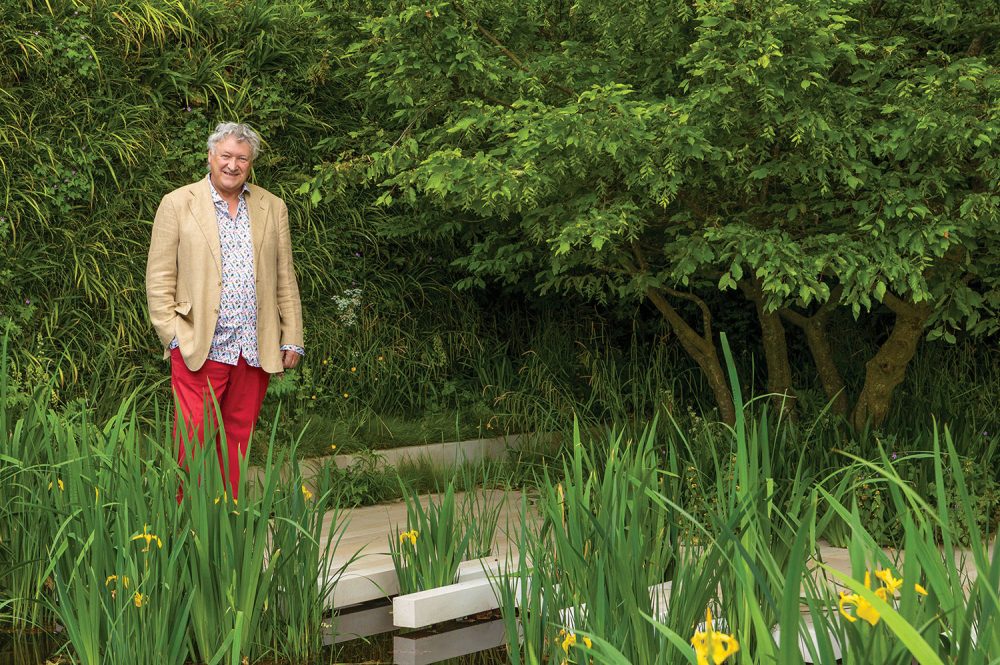
Some might call David Harber a wizard. They would be right.
Having begun his career designing and fabricating beautifully simple metal armillaries for garden application, Harber has broadened the scope of his skills over time, transforming his repertoire into a fantasy of sophisticated, organic, and magical shapes that play with light, water, and nature.
These treasures can be found in public and private spaces around the globe. However, the generous and gregarious artist would be the first to credit his extensive and eclectic cadre of craftspeople with articulating his vision. Metalworkers, engravers, etchers, gilders, and water-work and lighting technicians all have a hand in the process. The striking concoctions have made the name David Harber synonymous with inventive and lasting excellence in garden and outdoor sculpture.
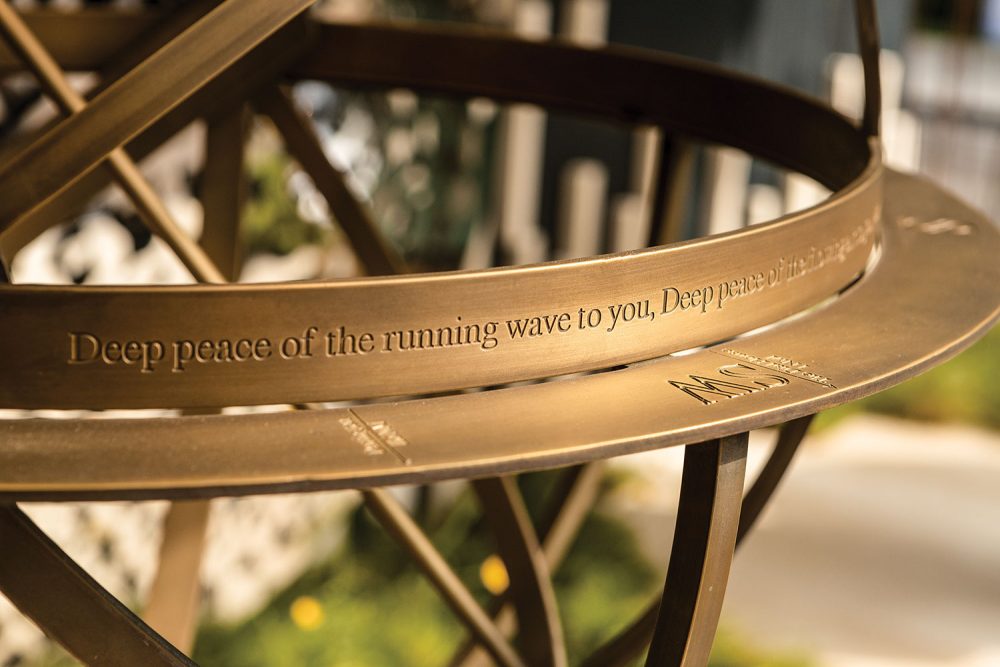

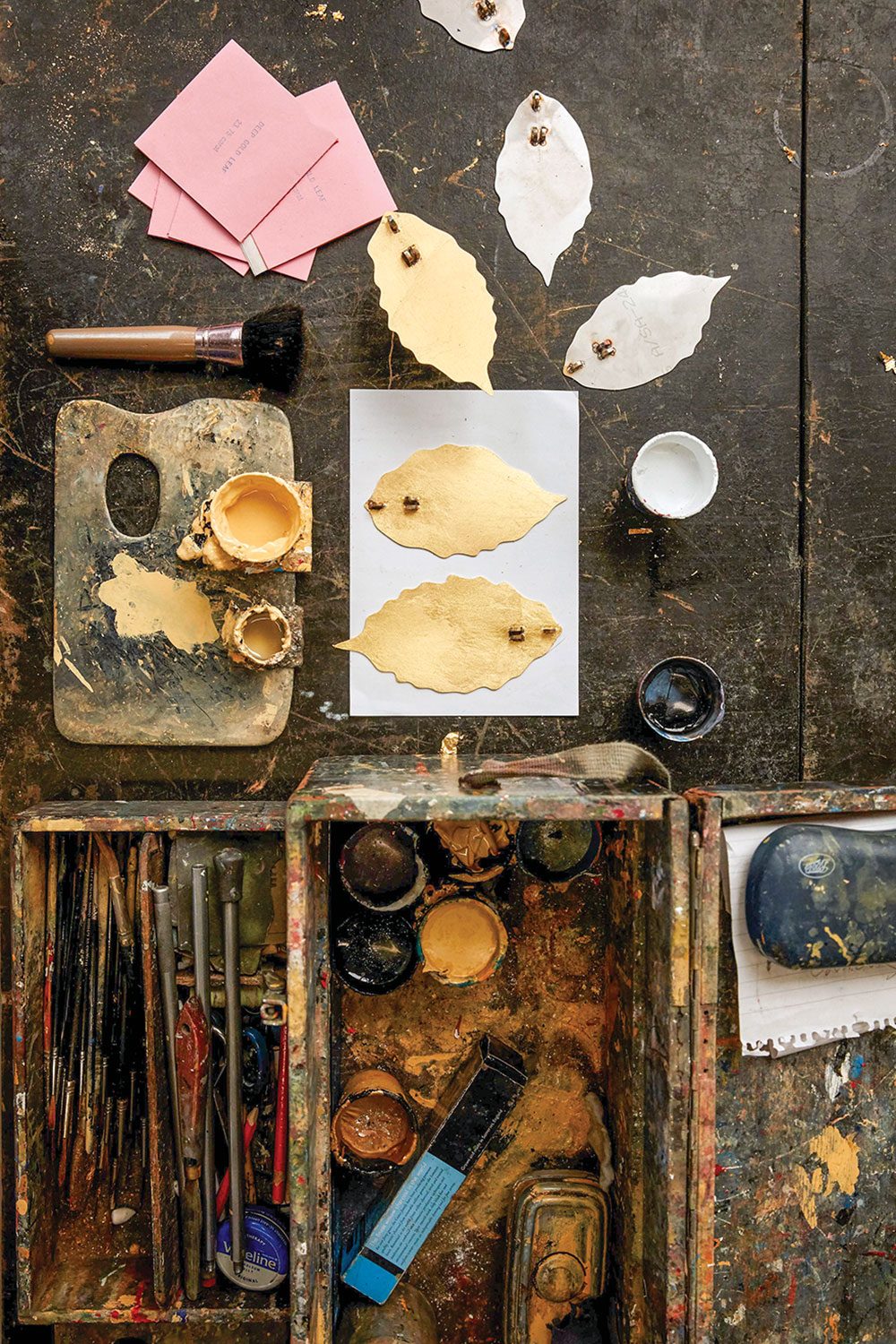
It is this deft craftsmanship and creativity that have garnered Harber numerous Best in Show awards at the illustrious Chelsea Flower Show. The Harber guild created a work for the 2019 Savills sponsored garden installation at Chelsea, in collaboration with Andrew Duff, a celebrated British garden designer and managing director of the Inchbald School of Design. With an eye to bringing along the next generation, Duff enlisted the help of a group of his students.
The design cohort conceived a garden highlighting the environmental benefits of indigenous trees, plants, and grasses within an urban framework. Endorsed by the Environmental Change Institute, a part of the University of Oxford, the project featured a host of elements: biodiverse large trees, a green wall, a water-purifying wetland area, and permeable surfaces.
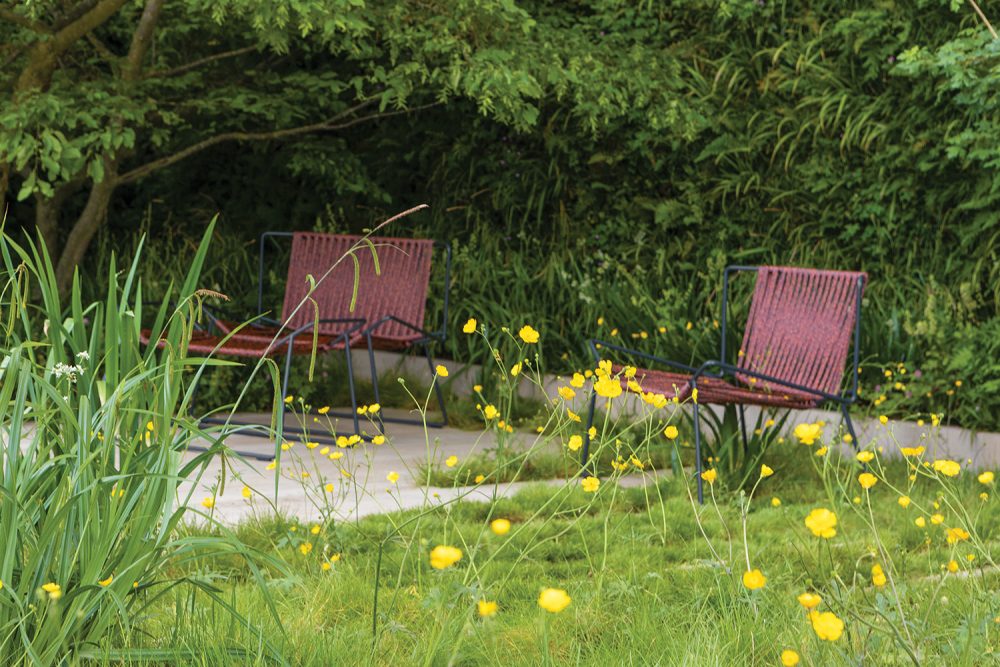
Duff employed chiefly native plantings made up of 1,000 perennials underplanting 18 mature trees, and more than 300 square feet of woodland-edge meadow turf interplanted with 10,000 biannuals. A mostly green palette underscored the sustainable message and served as a lush backdrop for Harber’s sculpture. A sprinkling of white and yellow blooms drew attention to focal points, while an acid-yellow selection representing sunlight brightened up shady areas.
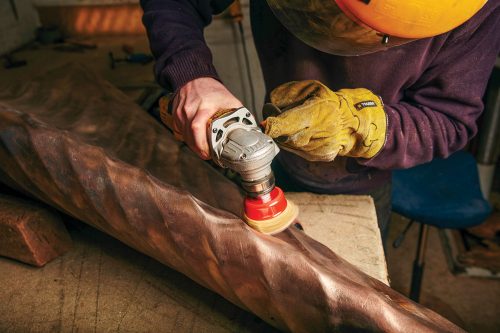
In a central pool of water, Harber installed a chorus of metal leaves that regularly surface and retreat, subtly referencing Falling Leaf, an 11.5-foot-tall bronze interpretation of a leaf seemingly suspended in air, dropping into the water. The clever composition speaks to the peaceful tone of the garden, all the while contributing a play of light, reflecting its surroundings. Ultimately, the viewer is impressed with a sense of the soul and power of nature, a common thread in Harber’s works.
“I’m thrilled to have designed a bespoke sculpture that seeks not only to celebrate but to improve the way we treat our surrounding environment, even in a city setting,” he says. “The delicate beauty of nature has always been a key inspiration.”
Garden Details

Plants
- Stellaria holostea – greater stitchwort
- Dryopteris filix-mas – male fern
- Arum maculatum – cuckoopint
- Euphorbia cyparissias – cypress spurge
- Iris foetidissima – gladwyn iris
- Tellima grandiflora – fringe cup
- Carex pendula – pendulous sedge
- Lamium galeobdolon – yellow archangel
- Lamium album – white nettle
- Anthriscus sylvestris – cow parsley
- Myrrhis odorata – sweet chervil
- Smyrnium olusatrum – horse parsley
Trees
- Corylus avellana – hazel
- Acer campestre – hedge maple
- Carpinus betulus – hornbeam
- Mespilus germanica – medlar
- Alnus glutinosa – European alder
See David Harber’s Work in New York
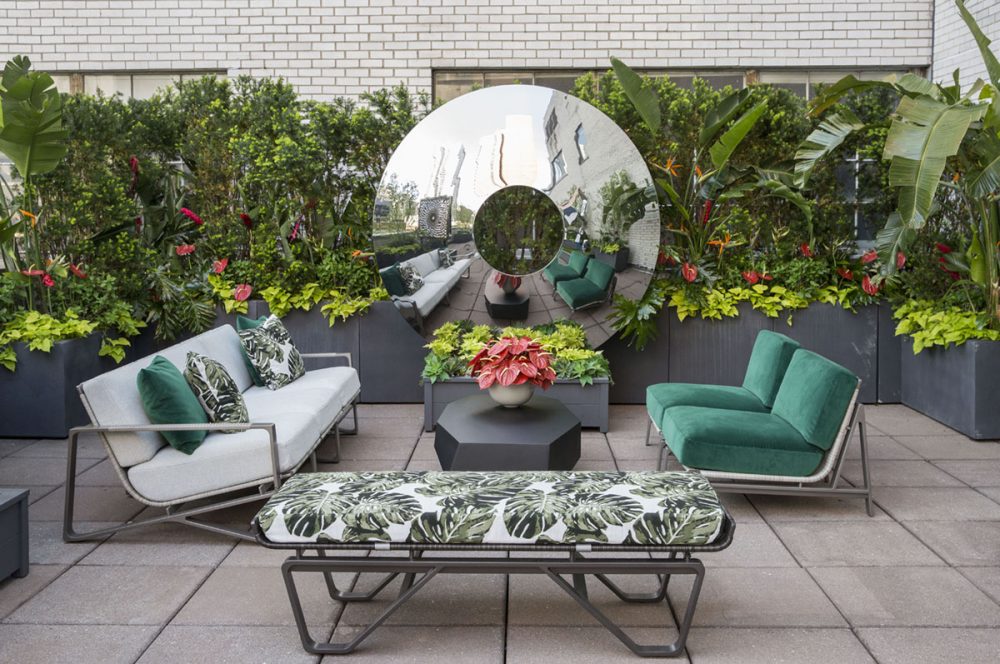
David Harber’s work is now being showcased in New York on a rooftop terrace adjoining the Christopher Peacock showroom at the Decoration & Design Building. It features a stellar garden design from award-winning landscape architect Janice Parker and nine David Harber signature sculptures, each handcrafted from materials such as copper, bronze, stainless steel, and stone at the David Harber studio and workshop, located in Oxfordshire, England. The space offers a moment of quiet reflection high above the bustle of the city and creates an intersection between sculpture and landscaping, nature and design.
Produced and written by Margot Shaw | Photography by Gavin Kingcome
